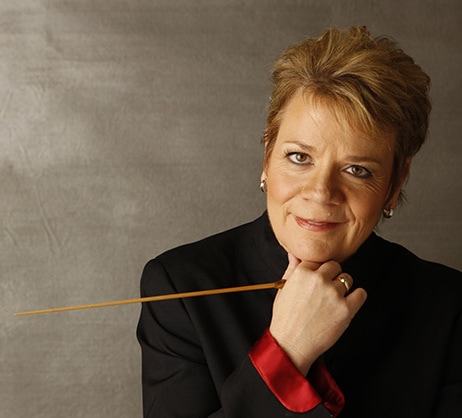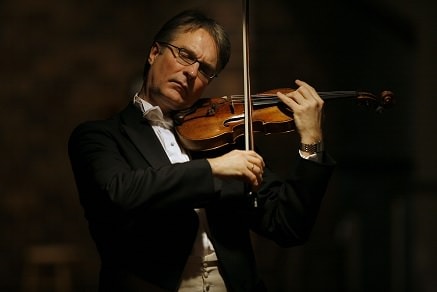Some critics go to music performances as a modern day Shakespearean Brutus: They come to bury the performance, not praise it.
And, bury it they do with raised pinky, off-putting, arcane phraseology only a Music major would understand, instead normal discourse used by the majority of the ticket holders – blue or white collar workers, students and retirees who just want to relax and enjoy a night out.

Luckily, DCMetroTheaterArts usually opts for the critics who write in ungarnished, 21st century AP Style English instead of bubbles and froth.
I’m one of those. Though I’ve never played an instrument in my life, don’t read sheet music, and can’t tell Bach from Beethoven, I relish exploring new options (for me) in entertainment, and learning a little in the process.
For fun, and to inadvertently lower the age demographic, I was accompanied by an 18-year old who hadn’t been to a symphonic performance since Kindergarten.
After an evening of listening to the Baltimore Symphony Orchestra perform (too mild a word) Mahler Symphony No. 6 in A minor, we both came away emotionally overwhelmed and thrilled with the sensory overload upon our ears. The teen is hooked. Can’t wait to go again.
The 85-minute, four-part, solely instrumental performance was similar in structure to composer Gustave Mahler’s second and third published editions: Allegro energico, ma non troppo; Andante moderato, Scherzo, and Finale.
Mahler, who died in Vienna, Austria at age 50 in 1911, wrote this symphony over a four year period, from 1901 to 1905. They were possibly the happiest years of his life.
Two years later, one of his two young children died, he was forced from his position as music director of the Vienna Court Opera and was diagnosed with a terminal heart condition.
A cacophonous noise greeted us as we entered the hall. The entire orchestra was on the unadorned stage, busily and noisily warming up. The men wore white tie and tails and the women were in black, too, wearing matinee length dresses, or dressy tops paired with either evening pants or skirts.
The stage was crowded with the largest orchestral group I’d ever seen, about 70 to 90. It looked like Grand Central Station at rush hour. A number were hidden in at the rear of the stage and weren’t visible until they rose to take a bow at the end.
In addition to a contingent of over 25 violinists, there were large groups on basses and cellos. Hidden in the back were the flutists; a horn section with flutes, oboes, English horns, clarinets, bassoons, trumpets, trombones, a big silver tuba, harps, timpani, percussion instruments, a keyboard, plus a giant wooden hammer and cowbells (shades of Christopher Walken’s “more cowbell.”). And, more.
A dimming of the lights to signal the start of the concert was the only special lighting effect of the evening.
Concertmaster Jonathan Carney, a violinist, violist, and a conductor strode out onto the stage and briefly led the orchestra in a few chords. Then, violin in hand, he took his seat between the conductor’s bare platform and the stage, stretched out his long legs shod with pointy-toed shoes. Next to him was Wyatt Underhill, the acting Associate Concertmaster. Throughout the evening, Carney’s energetic performance style was a joy to watch.

Marin Alsop, the BSO’s dynamic 12-year music director and conductor, bounded onto the stage. She wore a black pantsuit with a vivid red blouse with cuffs. The suit’s jacket was also lined with red.
Alsop didn’t just lead the performers, she dove into the music, danced with it, attacked it and translated it with a boundless energy and ferocity I haven’t seen before. She never stopped moving, jumping, stomping, and radiating.
The musicians responded in kind with an enthusiastic, bravura display.
Violin bows didn’t just glide across their owner’s instrument, they sliced the air like battle hungry sabers. At times, the violinists’ and bassists’ fingers plucked the strings in a coordinated duet between digit and horsehair.
There were sylvan moments when one could feel they were hearing water rippling through a mountain glen, breezes blowing, and the far off tinkling of bells and, yes, cowbells. Those moments were then torn apart by the rumble of an oncoming battle or raging storm, followed by a momentary return to tranquility.
Forget 3D movies. This was 3D music. It wrapped around the enraptured audience and embraced it. Squeezed it tightly.
There was also a giant wooden hammer that was an integral part of the composition. Aficionados of this symphony eagerly await its appearance and wonder how many times it will be swung near the finale. You’ll have to go to BSO’s Friday or Saturday night’s performances at the Meyerhoff to find out.
On a final note: A shout out here to all the wonderful volunteer ushers at Strathmore. They are always helpful – and provide service with a sincere smile.
Running Time: Approximately 90 minutes, with no intermission.
The BSO is performing Mahler Symphony No. 6 in Baltimore at the Joseph Meyerhoff Symphony Hall tonight, Friday, November 11 and tomorrow, Saturday, November 12, 2016, at 8 PM. For tickets, call the box office at (877) BSO-1444, or purchase them online.
The Baltimore Symphony Orchestra performed Mahler Symphony No. 6 on Thursday, November 10, 2016, at The Music Center at Strathmore – 5301 North Tuckerman Lane, in North Bethesda, MD. For future events, go to the Strathmore’s calendar of events.





